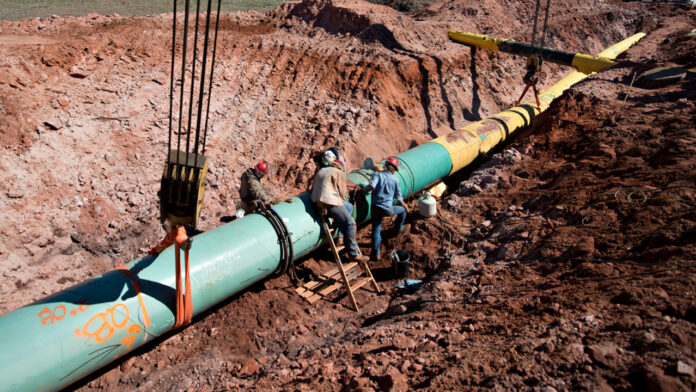Behind the diplomatic smiles, a ghost rises. In the background of recent trade discussions between Washington and Ottawa, a term long thought buried has returned to the negotiating table: Keystone XL pipeline. This ‘zombie’ infrastructure project — axed by the Biden administration in a symbolic act of climate virtue — now reemerges under pragmatic pressures. Energy security, economic interdependence, and geopolitical friction are quietly rewriting the terms of the deal.
A Political Corpse Walks Again
The Keystone XL pipeline, once the standard-bearer of North American energy ambition — was decapitated in 2021 with the stroke of a presidential pen. Joe Biden, under pressure from progressive climate hawks, revoked its permit on his first day in office. The move was applauded by coastal elites and European environmentalists, but left Canadian producers, American construction workers, and energy realists baffled. The pipeline had already been partially built; the sunk costs, both financial and diplomatic, were substantial.
And yet, in recent months, this political cadaver has begun to stir. Official communiqués remain evasive, buried in the technicalities of bilateral talks. But multiple leaks, industry whispers, and a notable shift in tone from Alberta officials suggest a revival — partial or full — is under active consideration.
Why Now? Energy Realism Replaces Green Utopias
The context has shifted dramatically. The Ukraine war, skyrocketing global oil prices, and the frailty of “green transitions” have forced Western governments to confront the limits of their energy illusions. The U.S., still nominally committed to net-zero targets, has paradoxically ramped up domestic drilling and LNG exports. The Keystone XL pipeline, long demonized as a climate threat, now appears less as an ecological hazard and more as an economic missed opportunity.
Canada, for its part, sees the current moment as leverage. Ottawa knows that American refineries need reliable input, and that Middle Eastern or Venezuelan alternatives carry political and logistical baggage. With the 2024 U.S. elections in the rearview, and a likely rightward shift in Congress, the Liberals under Trudeau may be hedging their bets, quietly preparing for a scenario where a Republican administration restores energy pragmatism.
Official Silence and Strategic Leakiness
No major announcement has been made, and that silence is strategic. Both governments understand the political volatility of the Keystone XL pipeline. For the Biden White House, reopening the file would appear as a policy reversal, an admission that climate ideology has collided with economic reality. For Trudeau, it’s a balancing act between appeasing domestic environmentalists and safeguarding Alberta’s indispensable oil sector.
Yet signs abound. The recent closure of a key airspace zone near the old pipeline route, officially for “infrastructure survey purposes”, has raised eyebrows. So too has the uptick in private equity flows into dormant pipeline assets. Markets are reacting before the headlines arrive, a telltale sign that something is indeed in motion.
The Pipeline as a Symbol of American Strategic Confusion
If revived, the Keystone XL pipeline will be more than just steel and oil. It will stand as a monument to Washington’s chronic indecision — a country that cancels what it later needs, that postures green while buying black. It will also reflect a broader North American tension: the growing divergence between American ideological diplomacy and Canadian economic necessity.
The original cancellation was celebrated in Brussels and Davos, but resented in Texas and Calgary. The revival, if it comes, won’t make headlines on CNN, but it may signal a return to something resembling realism. Whether that realism is lasting or merely transactional remains to be seen.
A Quiet Resurrection, A Loud Reckoning Coming
The Keystone XL pipeline is not just back — it’s back with more meaning than before. In its zombie-like return, it reflects the contradictions of an age where ideology runs into the hard wall of resource necessity. For conservatives and national realists, its return would be a vindication — however belated — that energy policy must be grounded in material fact, not climate fiction.
Time will tell if this is a genuine pivot, or a temporary fix by governments unwilling to admit past error. But the signs are there, and they’re getting harder to ignore.


